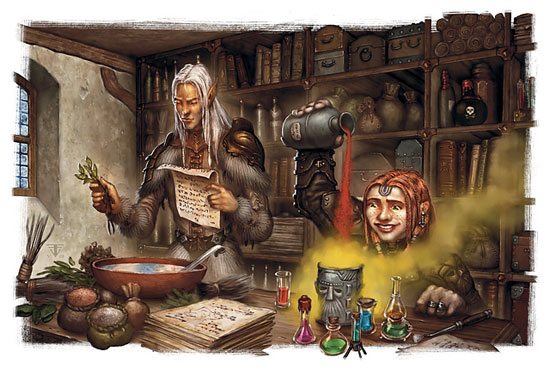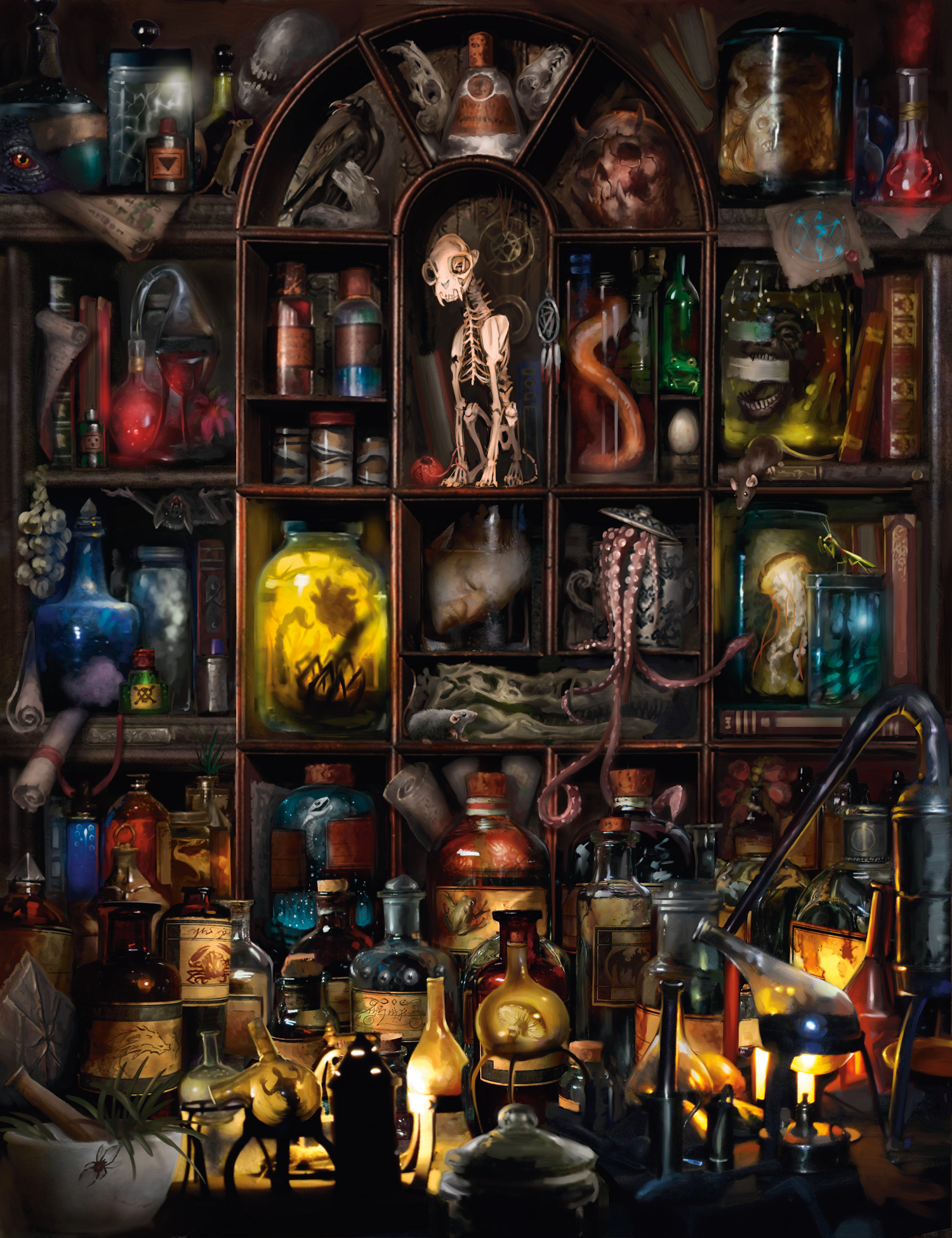After examining the first level abilities of the Artificer in the last post, we can continue to examine its other abilities. I'm going to set aside the much bigger question of infusions for now; we'll come back to it later.
Technically, I had left out the "Scribe Scroll" portion of the Artificer's first level abilities, but I'd like to address that alongside the general "Item Creation" extraordinary ability at second level.
The basic outline is this: as Artificers level up, they gain the ability to craft magic items of each tier with greater and greater ease. The qualities to be considered are: the type (scroll, armor, weapon, wondrous, etc.) and the rarity (common, uncommon, rare, ultra rare). A third category may be the permanence of an item (one-use versus persistent), but that's often taken care of in the other two categories.
- Item Creation: Starting at second level, an Artificer gains insight into the creation of permanent (both one-use and persistent) magical items. As the Artificer gains experience and power, these insights become more numerous and more valuable. As with all magical item creation, it is up to the DM to outline the necessary parts/features required to create magic items.
- At 2nd, 6th, 10th, 14th, and 18th, Artificers gain access to new rarities of item creation.
- At 3rd, 7th, 11th, 15th, and 19th, Artificers gain the ability to ignore one ingredient to the magic item recipe at the various levels of rarity.
- At 4th, 8th, 12th, 16th, and 20th, Artificers' item creation costs are discounted by 25% at the various levels of rarity.
- At 5th, 9th, 13th, and 17th, Artificers gain the ability to ignore a second ingredient in the magic item recipes at the various levels of rarity. (Legendary-tier items cannot have more than one ingredient ignored.)
- These item creation bonuses apply only to item types for which the Artificer can craft.
- Scribe Scroll: Starting at second level, an Artificer's close association with magical and pseudo-magical scripts gives him the ability to create magical scrolls. These scrolls may only be of levels for which the Artificer can cast infusions. [This will need tweaking as we deal with the infusions mechanics]. An Artificer may scribe a scroll for a spell which he has an existing copy or demonstration of only. For example, an Artificer may duplicate a scroll in his possession, may mimic a spell from a wizard's spellbook, or may scribe a scroll from a spell known by a cooperating and ever-present spellcaster who is assisting in the preparation and crafting of the scroll.
- Brew Potion: Starting at fourth level, an Artificer is capable of brewing magical potions and elixirs.
- Craft Wondrous Item: At fifth level, an Artificer gains the ability to craft wondrous items.
- Craft Magic Arms and Armor: At sixth level, an Artificer gains the ability to craft magical arms and armor.
- Craft Wand: At eighth level, an Artificer may begin crafting magic wands.
- Craft Rod: At tenth level, an Artificer may begin crafting magic rods.
- Craft Staff: At thirteenth level, an Artificer may begin crafting magic staffs.
- Forge Ring: At fifteenth level, an Artificer may begin forging magic rings.
With all of this in mind, there are a few things that still need to be discussed (or at least mentioned).
First, I've left out a few items on this original list: craft homunculus seemed somewhat unnecessary, as did the ability to take ten on a skill that doesn't really exist anymore. Retaining essences is an interesting idea, but I think it doesn't have a place in a magic item creation system that doesn't run on experience points. I also left out all discussion of metamagic feats and magical items. It seems to me that metamagic has been made the exclusive domain of the Sorcerer--one of the few things that has been given to a class that (at this point anyway) seems to be shunned in favor of the other primary spellcasting classes. Taking metamagic creation and giving it to the Artificer would just be mean.

Second, I removed all of the bonus feats. Those bonus feats are (in 5e lingo) the kind of specialization that should be left to archetypes. I'll have to develop a basic archetype for the Artificer, but until I do, I'm going to leave him without the bonus feats (or the "craft reserve").
Third, as you may have noticed, I bumped all of the item creation "feats" by exactly one level.
I thought about bumping the earlier ones by two levels in honor of the first few levels of 5e being "apprentice" levels, but decided against it in order to preserve the elegance of the original design. The single-level bump still makes it so Artificers are not necessary for item creation, but rather strongly encouraged.
Fourth, while there are definite guidelines for magical item creation in the Dungeon Master's Guide, I'm giving DMs a lot of latitude with these rules. Nowhere does it spell out exactly what is needed to create a given magic item. For now, that's up to the DM--though I could see a system easily falling into place. (For example, maybe the costs in the DMG represent only the gold costs for magical powders and inks used in the creation of all magical items, but different rarities of magic item also call for different numbers of additional ingredients. A common potion of cure wounds might need only the base cost and two additional items; an uncommon potion of cure wounds might need three.) These requirements could easily be scaled by the DM to fit whatever level of magic is required for the campaign. (In this respect, I could even see Artificers in non-Eberron settings--just jack up the requirements per magic item. Having said that, I think it may be so punishing that it's not worth it for players to pursue it. More on that later.) A high-magic Eberron campaign might lower the number of ingredients required, while a "standard" campaign might find the numbers I propose to be functional. Each DM can calibrate by adding or subtracting ingredients across the board.
Fifth (and finally?), it should be mentioned that this entire (series of) post(s) is devoted to how to make a 5e magic-item-crafting Artificer. In a non-Eberron campaign, I am uncertain that such a class has a place. For example, I don't think I'll be allowing my own players to playtest this class in our Forgotten Realms campaign; it's not the right flavor/fit. If we accept that the Artificer is an Eberron-only (or at least, primarily Eberron-exclusive) class, a lot of the balance issues start to fall away in favor of the higher magic environment.
Next time, we'll tackle another piece of the puzzle. In the meantime, let me know what your own thoughts are on the initial magic-item-line of the Artificer's repertoire!

2.jpg)
3%2Bcopy.jpg)
No comments:
Post a Comment